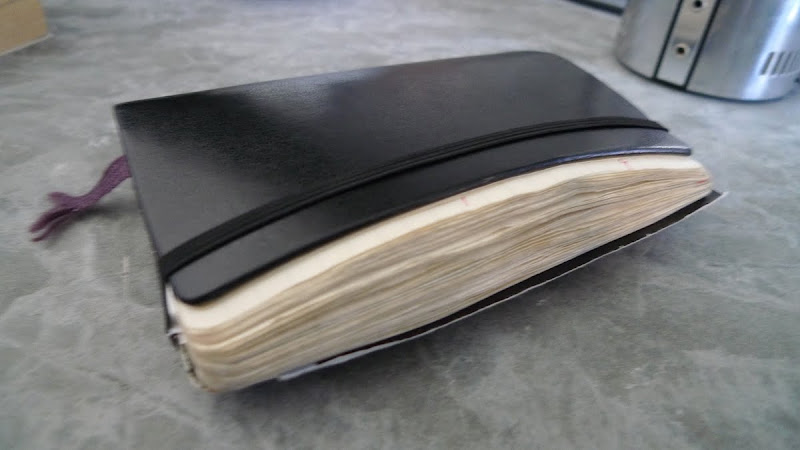


.
maksom mlaku mlaku mbari sepedaan..ngowo es cendol kakakakakakakakak
|
|
|---|












 Picture courtesy of : David Maclaskey
Picture courtesy of : David Maclaskey Doxa S.A. is a Swiss company, founded in 1889, that manufactures watches. Doxa is best known for its dive watches.Doxa, founded in 1889 by George Ducommun, began as a maker of fine dress watches and other timepieces. Over the years, Doxa gained in size and branched out into other timekeeping markets.
Doxa S.A. is a Swiss company, founded in 1889, that manufactures watches. Doxa is best known for its dive watches.Doxa, founded in 1889 by George Ducommun, began as a maker of fine dress watches and other timepieces. Over the years, Doxa gained in size and branched out into other timekeeping markets. Picture courtesy of : lesmala.net
Picture courtesy of : lesmala.net
In fact the success of Rolex's Submariner and Blancpain's Fifty Fathoms helped originate a market for followers such as Doxa. This may have been due to the efforts of Jacques Cousteau and increased general awareness of the sport. Doxa decided to devote resources to create a watch to be used for diving. Tests indicated that an orange face was more visible in murky water. Doxa also consulted with divers, including Cousteau, then chairman of "U.S. Divers," and Claude Wesly (a Cousteau companion and the first man to spend seven days thirty-three feet underwater). A staff of engineers and professional divers was assembled to create a watch with features important to the diving industry. The Sub300t was purchased in quantity by U.S. Divers, who resold the watch in the United States. It was an instant hit with divers and quickly sold out upon its introduction.


Other watchmakers then followed with similar bezels, as well as colorful and bright faces.
Soon after the introduction of the Sub300t, the Swiss watch industry was hard-hit economically by the quartz watch revolution. Accurate, reliable and small timepieces could now be made without the mechanical movements that the Swiss specialized in constructing. In response, Doxa joined a group of Swiss watchmakers to consolidate resources. This eventually failed and Doxa, after being sold, ceased operations in about 1980.
 Picture courtesy of : lesmala.net
Picture courtesy of : lesmala.net


.

 The United States Vintage Motocross series is a culmination of all that is good about vintage motocross in America. The sport started about 20 years ago and has continued to grow and evolve. A major component in its growth and health has been the independent regional clubs and organizations that have been able to "define" vintage racing in their own unique styles. It is that "local flavor" that is the essence of this national series.
The United States Vintage Motocross series is a culmination of all that is good about vintage motocross in America. The sport started about 20 years ago and has continued to grow and evolve. A major component in its growth and health has been the independent regional clubs and organizations that have been able to "define" vintage racing in their own unique styles. It is that "local flavor" that is the essence of this national series.



 Picture courtesy of : rageracing.com
Picture courtesy of : rageracing.com.jpg) Picture courtesy of : virginiabritishmotorcycleclub
Picture courtesy of : virginiabritishmotorcycleclub Picture courtesy of : kramer-sportsmotorcycles
Picture courtesy of : kramer-sportsmotorcycles







One of those in a position to do something about that was former West Coast Indian distributor and motorcycle magazine publisher Floyd Clymer, who acquired the rights to the Indian name in 1967 and made a number of attempts to revive the marque.
Clymer worked with two German firms, Munch and Horex, to build prototypes of an updated Indian, but neither of those projects got beyond that stage.
Eventually, Clymer succeeded in creating this machine, the Indian Velo 500. It combined an Italian frame and other components with an engine from the British Velocette factory. And in 1969, he offered the Indian Velo 500 to the public.
The bike was powered by a 499cc, single-cylinder, four-stroke engine that produced an estimated 34 horsepower at 6,200 rpm. It had a four-speed transmission, wet clutch and chain drive. An Amal carb handled the fuel-mixing chores, while the drum brakes were sourced from Grimeca.
Unfortunately, the Indian Velo came along at a time when the motorcycle world was rapidly changing. Indeed, the year it was first offered to the public, Honda unveiled the four-cylinder 750, and things would never be the same again.
Estimates of the number of Indian Velos produced range from 100 to 150 before Clymer’s death in 1970 brought an end to the effort.
This particular Indian Velo is owned by Arvid Myhre of Stockton, New Jersey, who has kept it in original condition.
“I picked it up because it was obvious that it would be a rare bike,” he says. “It was a departure from the classic British single, and I like that.”
Want to know more about the Velocette ... dont forget to check my friend Paul's blog : The Vintagent
.
|
|
|---|
|
|
|---|



